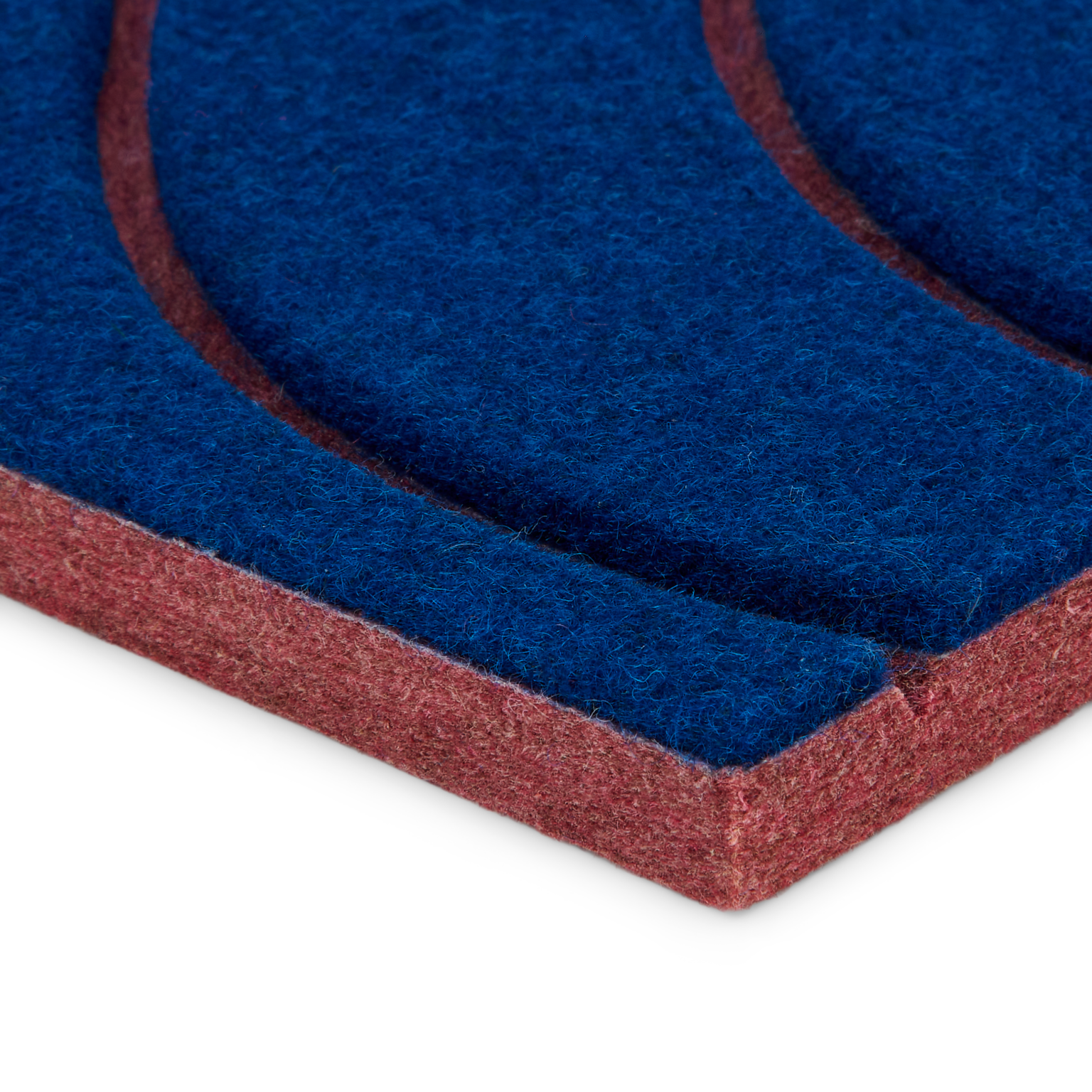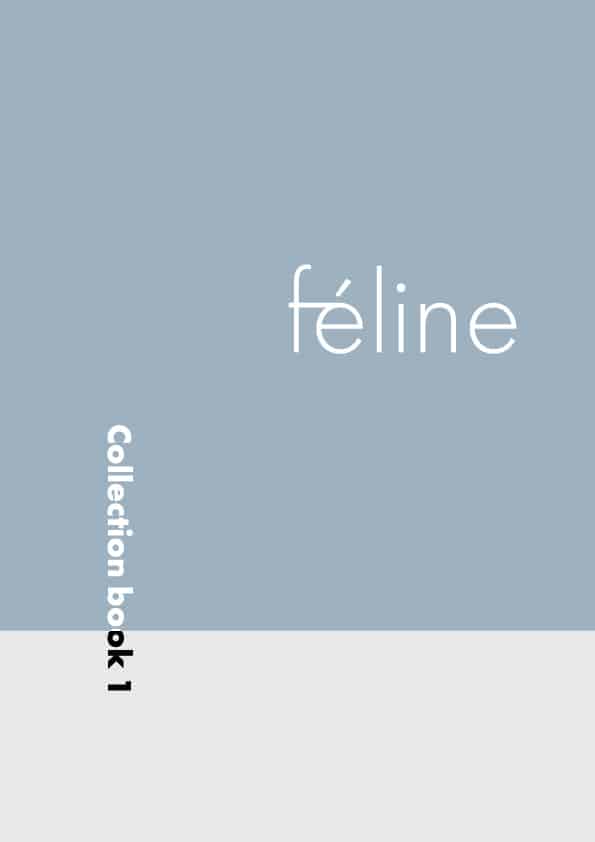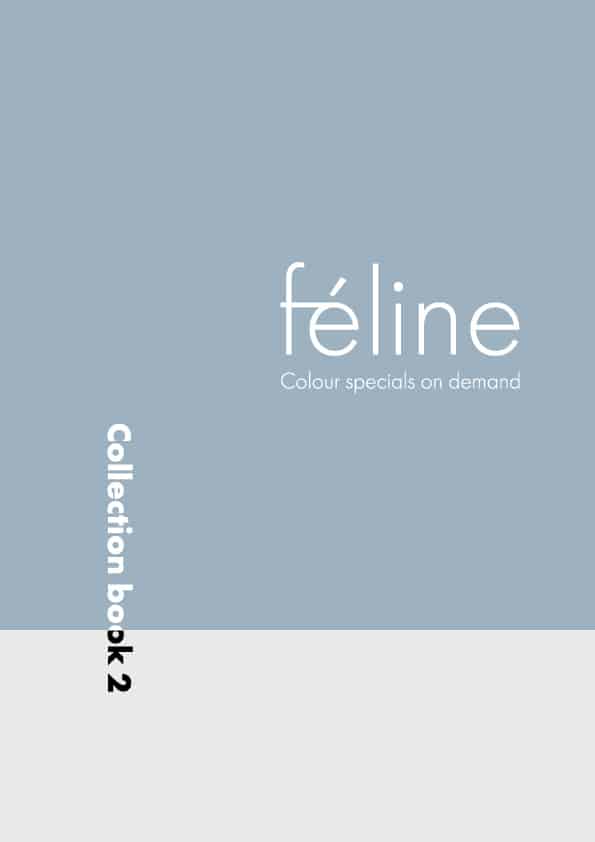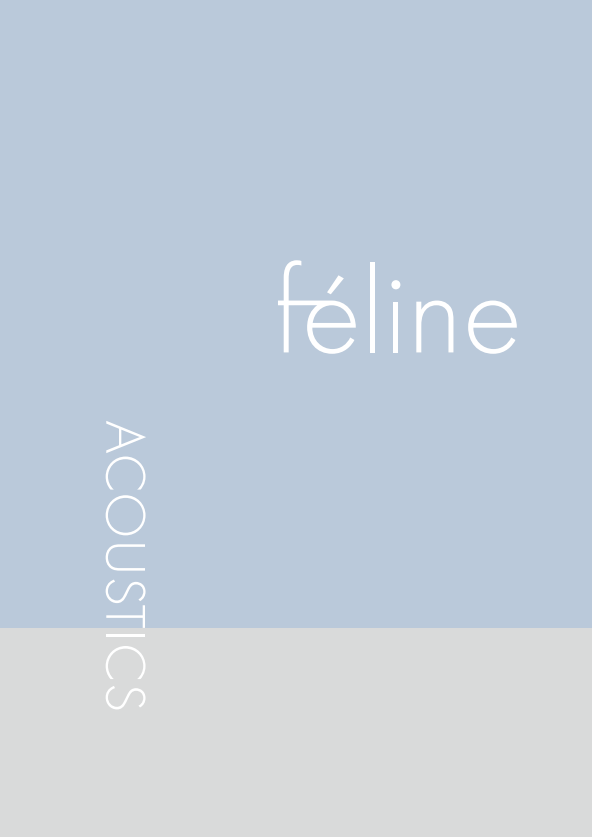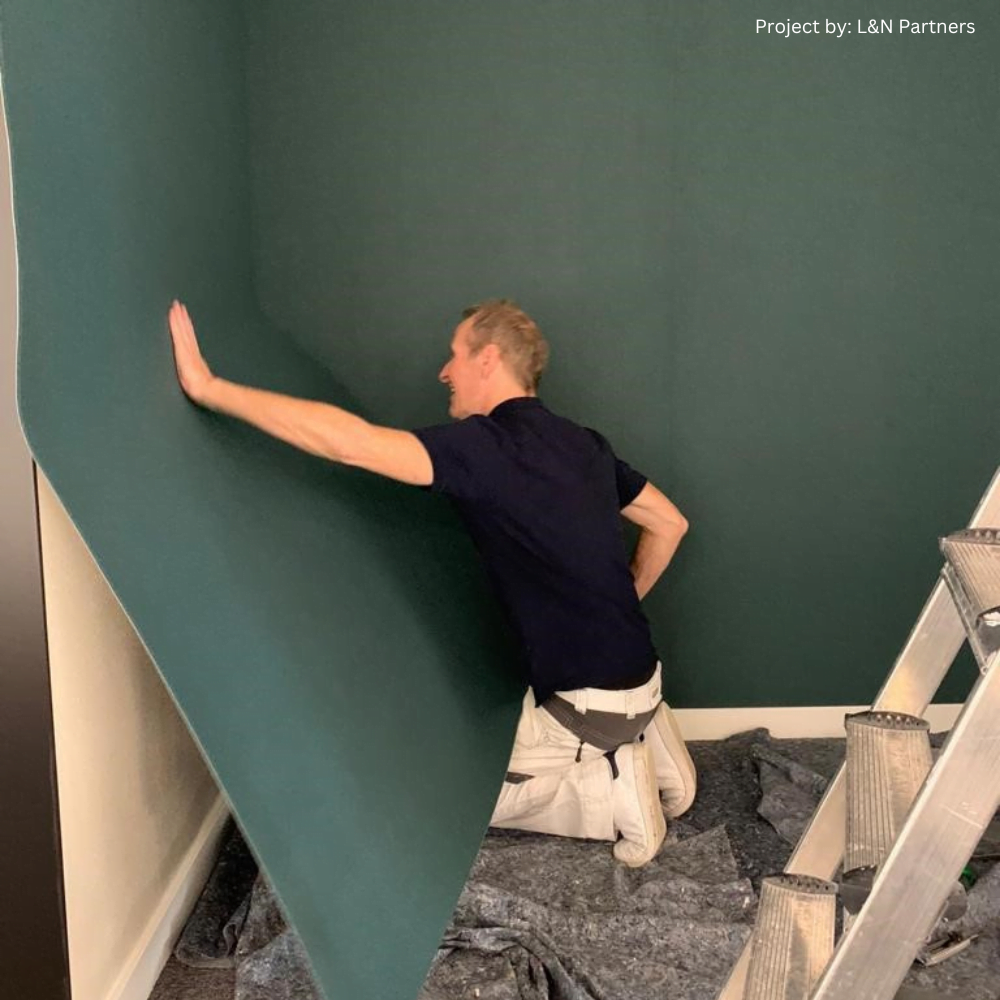
Applying Féline Felt Wallcovering
Applying wall textiles or textile wall coverings is not the same as applying paper/non-woven wallpaper. Textiles are more alive, they are less forgiving and glue stains are more difficult (if not impossible) to remove.
We therefore recommend that you have our wall textiles applied by a professional wall paperer with experience in applying wall textiles.
For the best result, we are happy to put you in touch with skilled professionals. Please note, Féline cannot be held responsible for undesirable visibility caused by the application of the wall textile.
Preparation
- First, check that the rolls all have the same batch number. This is important if the material will be used on one wall. lf the material will be used on different wal Is, make sure that each wall is from the same colour batch.
- Following, when cutting/rolling the strips, check the material for errors. lf there is an error, or if in doubt, stop immediately and contact the dient, or Féline.
- Use appropriate tools: a sharp (new) knife and/or sharp scissors, a plastic spatula and a soft brush. For pressing seams, we recommend using a wallpaper seam roller. Always work with clean tools and clean hands.
- Never pull loose threads, but cut them carefully with a knife or scissors.
- Our wall fabric is not resistant to large blobs of glue, so work carefully and only use clean tools. lf a drop of glue ends up on the fabric by accident, clean il immediately. Put absorbing paper (e.g. kitchen towels) on the seam before applying pressure so that excess glue can be absorbed immediately. lf any further cleaning is required: use a slightly damp cloth, and dab to clean. Never use a detergent or scrubbing pad. Do not rub the feit as il can cause damages to the surface of the feit. lt is beller, however, to use the correct amount of glue and to apply il uniformly to avoid excess glue.
- Make sure that the base meets at least the following requirements:
• Smooth: any irregularities on the base could leave a mark. Bumps must be smoothed out, old glue and wallpaper remnants must be removed and holes must be filled and sanded smooth.
• Dry: make sure that the reason behind leaks or humidity are known and resolved. New plaster requires a few days to dry completely.
• Strong: powdery walIs and new stucco must be treated with adhesion primers.
• Clean: old wallpaper and glue rests must be removed. The wall must also be dust-free.
• Lightly absorbing: the based must be able to absorb some, but not too much glue. A base that absorbs too much glue, e.g. a new stucco, would not hold properly and il should preferably be treated with a smoothing product or thinned glue. For correct thinning, follow the instructions on the glue package. Let the wall dry for at least l day after this. A base with poor absorption properties would also not hold properly and il must be smoothed out beforehand or treated with a binding primer. - Glue: make sure the right glue is used. We recommend using Féline Eco Glue Forte for the best and most powerful gluing result. Use of any other glue is at your own risk.
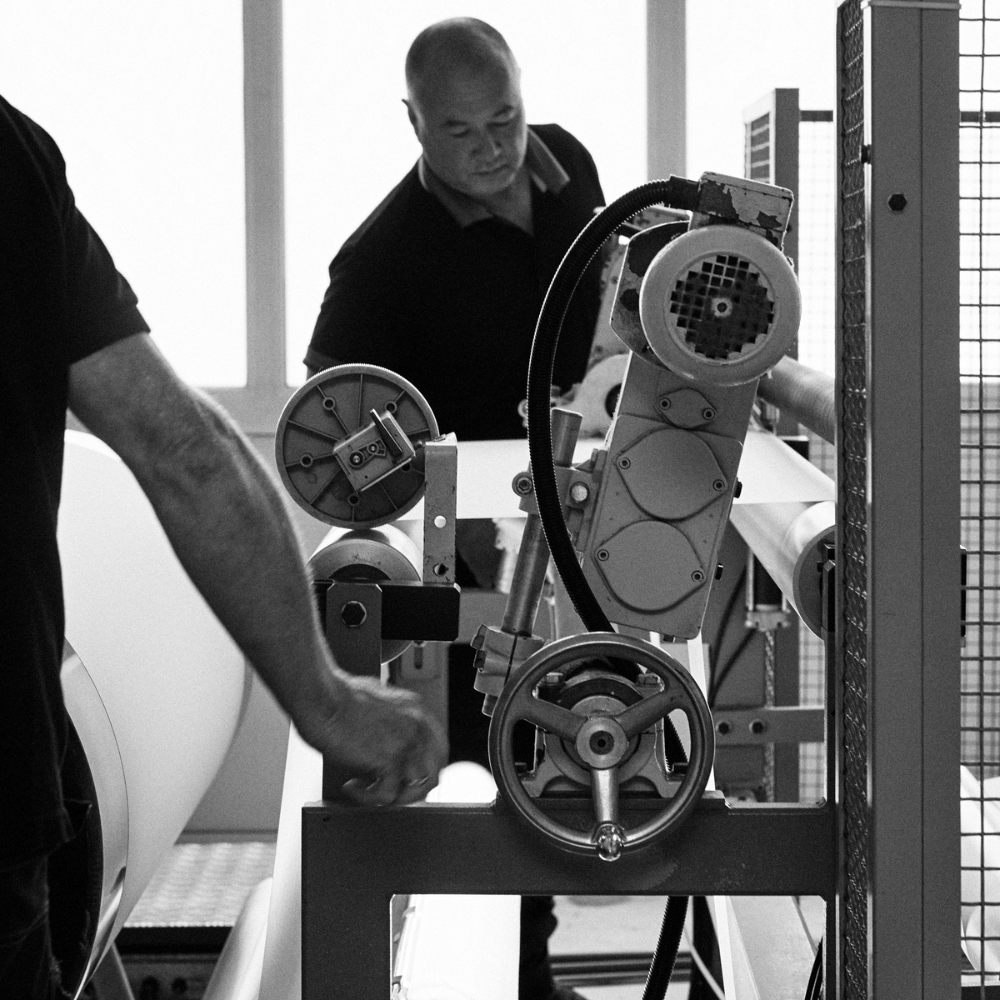
Application
- Check the wall beforehand. lt should be smooth and clean.
- To ensure good adhesion of the wall covering, we recommend priming new plaster walls and other absorbent substrates with Fix-Primer.
- Measure the height of the wall. Cut the strips+ l O cm langer.
- Glue the wall evenly with a coat roller and brush. We recommend using Féline Eco Glue Forte.
- Stick the first strip on the wall. Press them with a wallpaper brush and/or a wallpaper spatula. Press the strips tightly against the top and bottom with the wallpaper spatula and cut the strips to size with a sharp knife.
- Place the second strip (in order of cutting the roll) to the wall.
- Close the seams nicely by hand. lf necessary, gently roll the seam with a wallpaper seam roller.
- Check again for unevenness.
- Your feit wall is now ready !
*Fabric strips may still be visible with some types of wall fabric, even when the above directions are closely followed. This effect and slight differences in colour per production run are inherent to working with fabrics.

